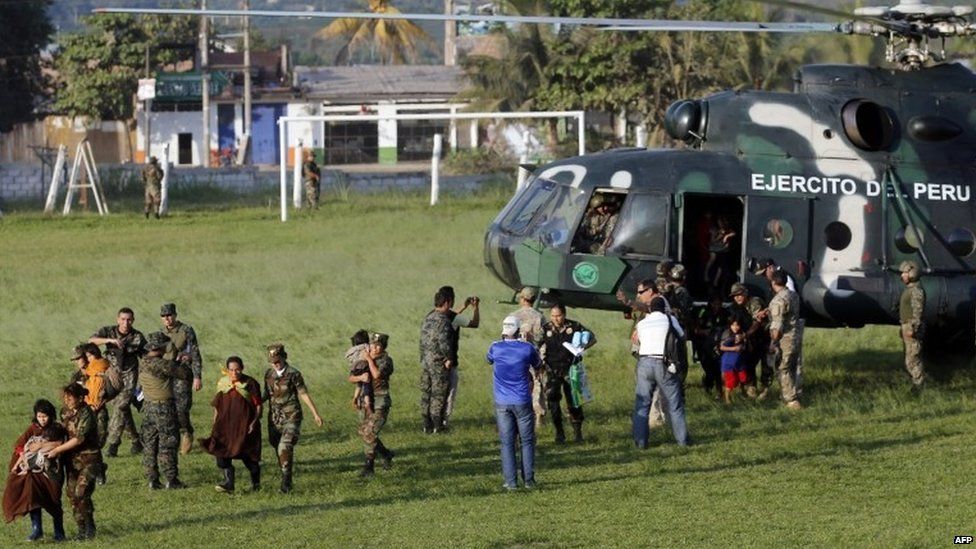By Kaitlyn Degnan
Impunity Watch Reporter, South America
LIMA, Peru —
About 120 Peruvian special forces successfully raided a camp belonging to group “Shining Path,” rescuing captives held there as slaves. Some of those held claim they have been captives of the group for almost 30 years.

The camp was located in the valley of the Apurimac, Ene and Mantaro Rivers, an area known as Vraem. Over 200 tons of cocaine are reportedly produced there every year – one third of the production for the entire country. Shining Path has been known to work with drug traffickers.
39 people were rescued from the camp – 26 children and 13 adults. Some of the children were born in the camp while others were likely kidnapped from surrounding rural areas, where impoverished parents don’t report abductions out of fear.
At least one of the captives was part of a group of nuns kidnapped by the group 25 years ago.
It is thought that at least 100 people remain captive by Shining Path.
The camp was a “production camp,” where inhabitants are meant to “work and procreate.” Women held there were raped and expected to have as many children as possible, to give birth to more rebels. Both women and children were forced to work in the fields and perform domestic duties.
Peruvian Vice Minister of Defense Ivan Vega reported that those held at the camp were forced to work in fields and on farms growing food for Shining Path members.
Children in the camps are instructed in the group’s Maoist ideology. Once the children reached the age of 13, they were considered “recruits,” and eligible to participate in the group’s armed operations. The rescued children will be placed in the care of the Ministry of Women and Vulnerable Populations.
Shining Path was started in the 1960s as a communist revolutionary group. The group in its heyday had about 10,000 members. The group, whose highest goal is to overthrow the Peruvian government, waged an insurgency that left 70,000 people dead or disappeared in its wake.
The fighting between the Peruvian government and Shining Path ended in 2000. Peru opened a museum to honor those killed in the conflict just last year.
Today their numbers are much smaller and the group engages in narcotics trafficking to fund its campaign. Shining Path caused a stir in 2012 when members of the group tried started a petition to form an official political party.
For more information, please see:
Council on Foreign Relations – Shining Path, Tupac Amaru (Peru, leftists) – 27 August 2007
The New York Times – Peru Forced to Confront Deep Scars of Civil War – 26 May 2012
BBC – Peru rescues 39 ‘slave workers’ from Shining Path Farm – 28 July 2015
Peru this Week – Shining Path still holds 100 hostages in Vraem – 29 July 2015
Reuters – Peru forces raid coca region rebel slave camp, rescue 39 women, children – 29 July 2015
TeleSur – Peru: 39 People Rescued from Camp Run by Shining Path – 29 July 2015